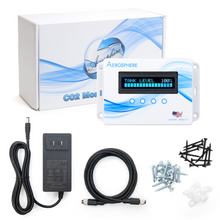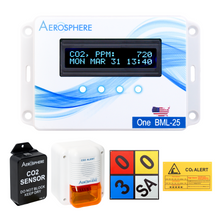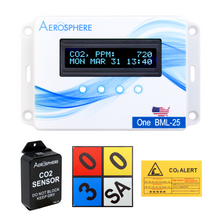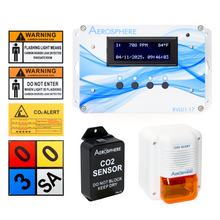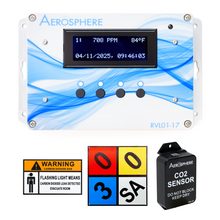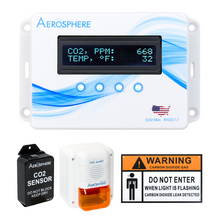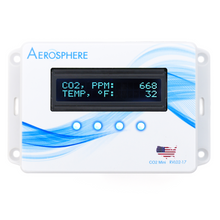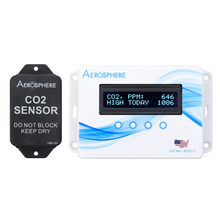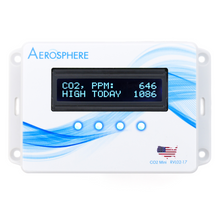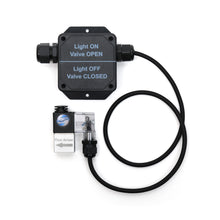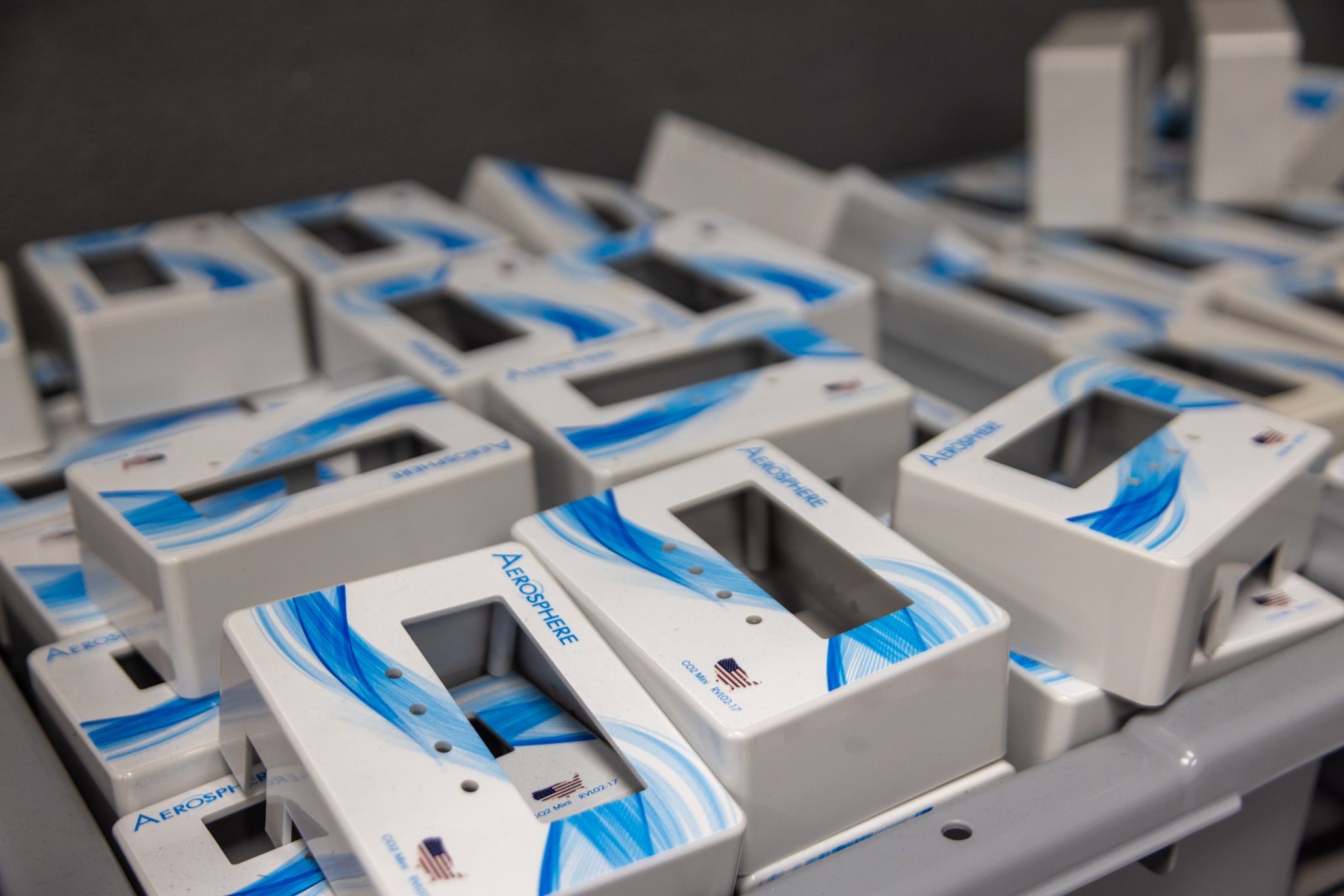Carbon Dioxide Safety Levels Chart
Carbon dioxide (CO2) is essential in various industries but poses significant health risks when concentrations rise. Leaks from CO2 tanks can lead to asphyxiation, respiratory issues, and even death, highlighting the importance of regular monitoring. The Aerosphere® CO2 Monitoring System offers an effective solution, providing real-time detection and alerts to safeguard employees and customers.

As the National Library of Medicine documented, carbon dioxide “appears as a colorless, odorless, and tasteless gas”. It is about 1.5 times heavier than air, which means it can accumulate from the ground up during a leak, making it undetectable and invisible to our senses.
Industrial Applications of CO2 & Life Safety Risks

Carbon dioxide is crucial across various industries where CO2 is used or produced, such as food and beverage, manufacturing, healthcare, and agriculture. In restaurants and bars, CO2 is often used for beverage carbonation and cooling systems (such as a beer or walk-in cooler), and in manufacturing and industrial settings, it may be used for welding, dry ice production, or refrigeration. In agriculture, CO2 is used in controlled environment farming to enhance plant growth. Each of these industries faces unique CO2-related risks.
These risks can include CO2 gas leaks from a CO2 bulk tank cylinder, which can occur due to faulty valves, damaged hoses, or improper installation. A leak from a bulk tank cylinder can cause the gas to accumulate in confined spaces, posing serious health risks to anyone in the area.
The USDA Food Safety & Inspection Service from the U.S. Department of Agriculture states this under their “Carbon Dioxide Health Hazard Information Sheet”:
“[Under normal concentrations,] CO2 is considered to be minimally toxic by inhalation. The primary health effects caused by CO2 are the result of its behavior as a simple asphyxiant. A simple asphyxiant is a gas which reduces or displaces the normal oxygen in breathing air.
Symptoms of mild CO2 exposure may include headache and drowsiness. At higher levels, rapid breathing, confusion, increased cardiac output, elevated blood pressure and increased arrhythmias may occur.
Breathing oxygen depleted air caused by extreme CO2 concentrations can lead to death by suffocation.”
Long-term exposure to high levels of carbon dioxide can lead to hypercapnia, a condition where excess CO2 builds up in the blood. As explained by the Cleveland Clinic, while our bodies naturally adjust to varying O2 and CO2 levels in the air, prolonged exposure to elevated CO2 concentrations can result in symptoms such as shortness of breath, headaches, persistent fatigue, disorientation, confusion, paranoia, depression, and seizures. If the body cannot compensate for these higher levels, it could be fatal.
In addition to this, CO2 concentrations in high amounts can cause asphyxiation and respiratory issues, even leading to death. Equipment failures, temperature fluctuations, or pressure changes in CO2 tanks can further exacerbate the risk of CO2 leaks. Therefore, it is critical to regularly monitor CO2 levels, implement proper safety protocols, conduct routine inspections, and use reliable CO2 monitoring systems to protect both employees and customers.
Physical Effects of CO2 at Certain PPM Concentrations in Normal Air
| CO2 Concentration | Effect/Information |
|---|---|
| 0.03% (300 ppm) | Normal indoor air |
| 5,000 ppm (0.5%) | OSHA PEL & ACGIH TLV for 8-hour exposure |
| 15,000 ppm (1.5%) | Mild respiratory stimulation for some people |
| 30,000 ppm (3.0%) | Moderate respiratory stimulation, increased heart rate & blood pressure, ACGIH TLV-Short term |
| 40,000 ppm (4.0%) | Immediately Dangerous to Life or Health (IDLH) |
Regulations and Integration of CO2 Monitors into the Workplace
There are four primary codes that apply to CO2 monitoring compliance: IFC, NFPA 55, NBIC, and CGA G-6. The body of code enforced in your area is determined by the enforcing jurisdiction, or the "AHJ" (Authority Having Jurisdiction). Each of these codes states: “An operational permit is required for the storage, use, or handling at normal temperature and pressure (NTP) of compressed gases in excess of 100 pounds”.
Adhering to these regulations, as well as providing CO2-specific education, helps safeguard staff members and patrons from potential health risks. Detecting leaks and monitoring CO2 levels in workplace facilities is easy with an intuitive CO2 monitoring system.
CO2 monitoring devices, such as the Aerosphere® RVL-01 Primary Unit, measure CO2 levels in parts per million (ppm) using an NDIR sensor. These devices are programmed with preset exposure thresholds to alert users when CO2 concentrations reach hazardous levels. See the graphic below:

Aerosphere CO2 Monitoring System. Cyl-Tec, Inc., 2023.
Best CO2 Monitoring Unit in the Market for all Industrial and Residential Uses

The Complete Aerosphere® CO2 Monitoring System has everything you need to monitor the CO2 levels in the air.
At the heart of each system is the Primary Unit. The Primary Unit is the main interface for the Aerosphere® system. An LCD screen located on the front of the unit displays gas detection levels for all sensors, alarm statuses, temperature, and time/date. The entire system functions on 24 volts that can be plugged into any wall receptacle. Audible and visual alarms are provided for three concentrations of CO2. The activation thresholds have default settings at 5,000, 15,000, and 30,000 parts per million (ppm). All of these set levels are adjustable to meet ANY code. The Complete System includes one Horn Strobe for enhanced audible and visual notification. Additionally, multiple sensors and horn strobes may be added to the system to extend coverage.
On top of that, the Aerosphere® system is the most expandable and easy-to-install monitoring system on the market. Unlike most other models, the Aerosphere® can connect and expand throughout an entire facility on one system. In fact, it can even expand to different components.

